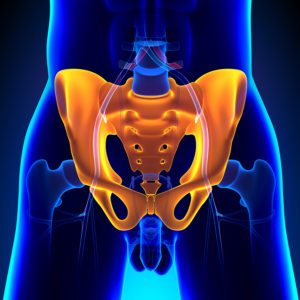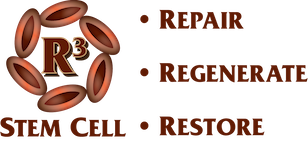
Stem Cell Therapy
Pelvic pain has been a conundrum for most physicians, despite the recent advancements in modern medicine. Regenerative medicine has thankfully become available for patients with the hope of regenerating and repairing damaged areas which may include one’s bladder, endometrium along with scar and muscle tissue. These treatments are state-of-the-art and being offered by the Board Certified providers at the Scottsdale R3 Stem Cell Center of Excellence. Here is an overview.
Pudendal Neuralgia and Chronic Pelvic Pain:
Pudendal neuralgia commonly occurs with pelvic pain, either as a primary or secondary condition. There have been two groundbreaking studies evaluating stem cell therapy for pudendal neuralgia.
The first, by Venturi et al, was published in 2015. Fifteen women suffering from pudendal neuralgia were treated with stem cell injections over a course of a  year. Some received numerous injections, with no complications being reported.
year. Some received numerous injections, with no complications being reported.
Several outcome variables were evaluated, with the most compelling being the VAS pain scale. Over the period of a year, pain was reduced from 8.1/10 to an average of 3.2/10. This was a reduction of 60%.
The authors compared these results with those using chronic narcotics or surgical decompression. Narcotics have a significant risk of complications such as addiction, while surgery has its own set of potential adverse events.
Interstitial Cystitis
Interstitial cystitis affects millions of patients, with the exact cause remaining unclear. We do know that patients with Interstitial Cystitis suffer from an inability to proliferate bladder cells necessary for repair of the lining. Most likely this is due to abnormal cell signaling and cytokine release. There are also theories that pain associated with interstitial cystitis may be a result of neuroinflammation.
Patients suffering from cystitis have damage to the muscle and urothelium, with a spectrum of symptoms being reported. Conventional treatments with oral medications, fulguration, hydrodistention have not shown satisfactory outcomes. Initial studies looking at use of stem cells for interstitial cystitis have been promising.
Innovative application of stem cell therapy using animal models have shown that intravesical instillation of stem cells has shown evidence of smooth muscle incorporation into the bladder wall.
Amniotic stem cell therapy is currently being used at R3 Stem Cell’s Centers of Excellence for patients with interstitial cystitis. The procedure involves fluid obtained from consenting mothers after a scheduled C-section and processed at an FDA regulated lab. The babies are fine and no embryonic stem cells are used.
Amniotic fluid contains a plethora of useful elements that are critical to tissue regeneration and repair including:
- Stem Cells
- Cytokines
- Growth Factors
- Exosomes
- MicroRNA
Treatment with the amniotic stem cell therapy for pelvic pain due to interstitial cystitis are performed by a Board Certified Gynecologist in Scottsdale, Arizona. Richard Demir, MD, is an Award Winning, compassionate provider who is at the forefront of contemporary pelvic pain treatment.
Central Pelvic Pain and Endometriosis
R3 Stem Cell’s Scottsdale Center of Excellence is evaluating the use of amniotic treatment for the following pelvic pain causes:
- Pelvic Scar Tissue
- Adenomyosis
- Fibroids/Polyps
- Endometriosis
Conventional treatment for these conditions has often left patients with unsatisfactory levels of remaining pain and complications such as narcotic side effects, scar tissue, or infection. Amniotic therapy has been shown in various conditions to have exceptional outcomes for many conditions, including COPD, Kidney Failure, Neurologic Conditions, Arthritis, Tendonitis and many more.
Why do they work so well?
Amniotic fluid’s primary “job” is to protect the fetus against infection and to help it grow and develop. Interestingly, amniotic fluid itself does not have any HLA factors. This means it does not cause a rejection reaction known as “graft versus host.” Therefore, it is commonly used both as an injectable and for systemic treatments by IV infusion.
The elements of amniotic fluid work together to help the body repair itself and promotes regeneration by itself and working in concert with the body by revving up the body’s own repair mechanisms. In addition, the fluid contains antimicrobial elements along with over ninety growth factors, cytokines and many live stem cells. R3 providers refer to the amniotic fluid as containing the entire “orchestra” of regenerative elements, as opposed to bone marrow which is extremely variable depending on a person’s age.
References:
Kim et al., Stem Cell Therapy for Interstitial Cystitis/Bladder Pain Syndrome. Curr Urol Rep 2016.
Venturi et al, Pudendal Neuralgia: A New Option for Treatment, Pain Medicine 2015: 16: 1475-1481.
